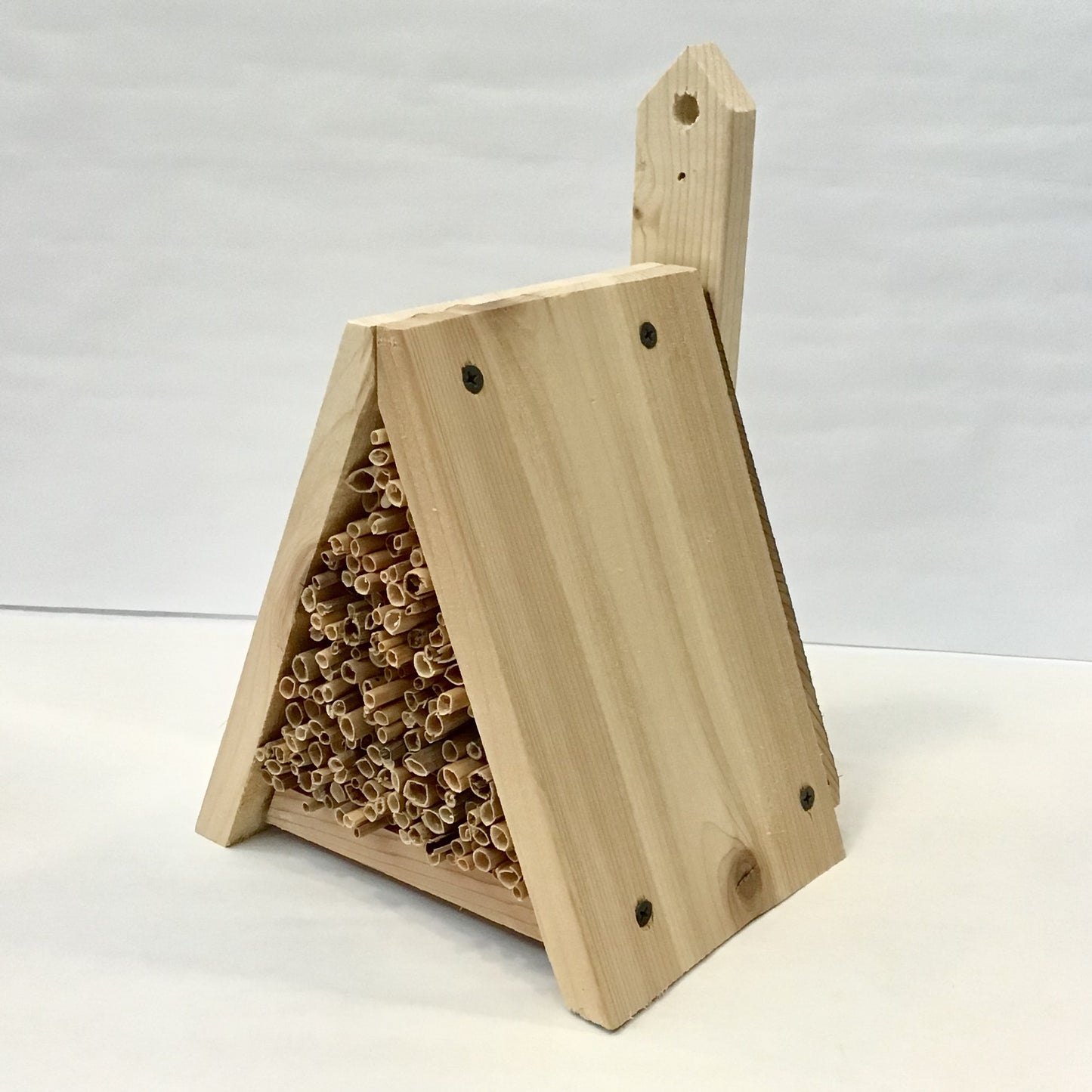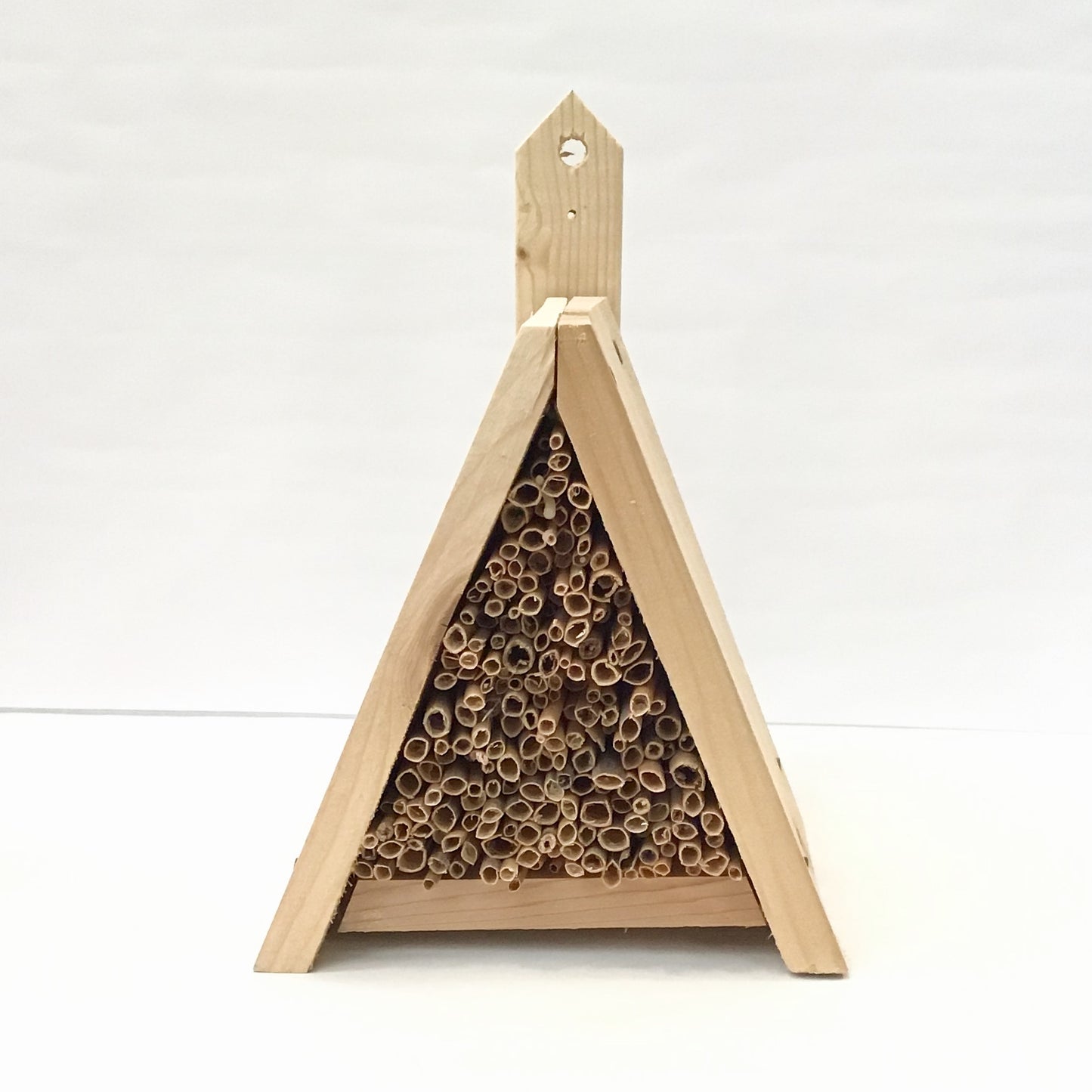Bee House
Bee House
Couldn't load pickup availability
Solitary bees comprise the majority of bees, yet they are unsung heroes of our pollinator world, generally having a far lower profile than either honey or bumblebees. Yet they are outstanding pollinators, and only during recent years, are they beginning to get the recognition they deserve. Many species can easily be mistaken for wasps, hover flies, or even honey bees.
Where Do Solitary Bees Live?
Unlike honey bees, where nest building and maintaining, as well as rearing of young is a task shared by the whole colony, this is not the case with most species of solitary bee.
Solitary Nesting: With some species, a nest is built by a single female, and with no other nests nearby.
Aggregations: Despite their name, some species do live in a type of social group, with bees building separate nests close to each other and giving the appearance of a sort of colony.
Communal: Some species may even live communally, in that a nest entrance is shared. However, female bees build individual nest cells for laying their eggs.
Semi-social: Some, for example, species of sweat bees found in the USA and Canada (Lasioglossum) may use the same nest, and also co-operate to provide for the offspring.
Stings From Solitary Bees
Note that these types of bees rarely sting, and are actually rather docile. Only females have the ability to sting, whereas males are unable to do so. However, males of some of these species can appear to be quite defensive – carpenter bee males, for example, can be rather attracted to humans who are wafting their arms around! Despite this, the bee is unable to sting and poses no threat!
Bee Houses
Installing a bee house will enable you to observe the bees at quite close quarters, while also benefitting from the pollination services they provide.
Handmade by the Oak Hammock Marsh Volunteers
Share




